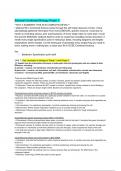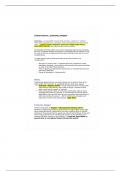Interview
Grade 99 Edexcel Combined Science: Biology Paper 1, Most detailed notes you'll ever find, better than the textbook bro by CombSci&Geo
- Vak
- Instelling
**NOT A SUMMARY, THIS IS IN COMPLETE DETAIL** I attained 99 in Combined Science solely through this self made resource of mine. I have painstakingly gathered information from every EDEXCEL specific resource I could lay my hands on (including seneca, pmt, savemyexams, lit every single video on each...
[Meer zien]





